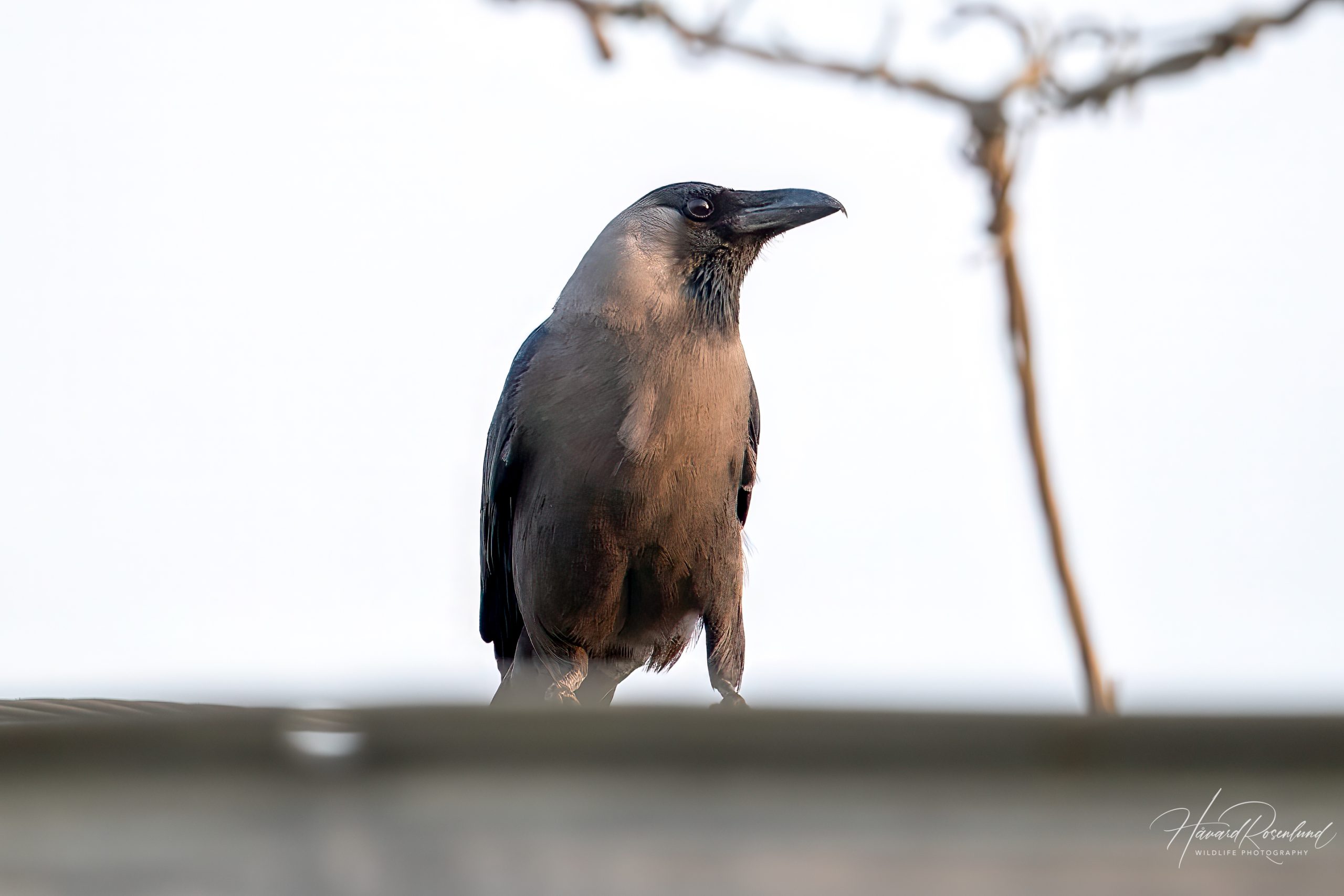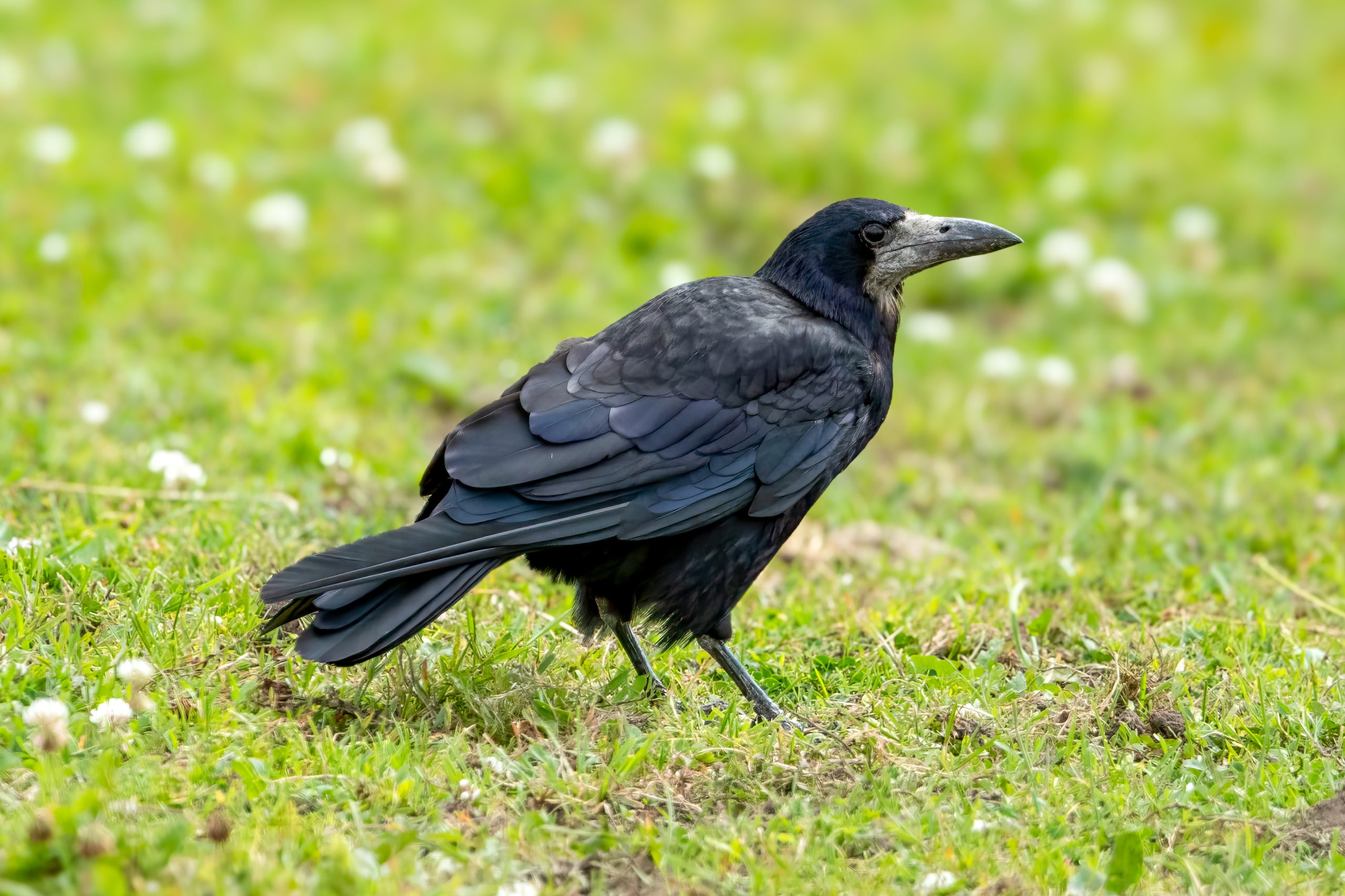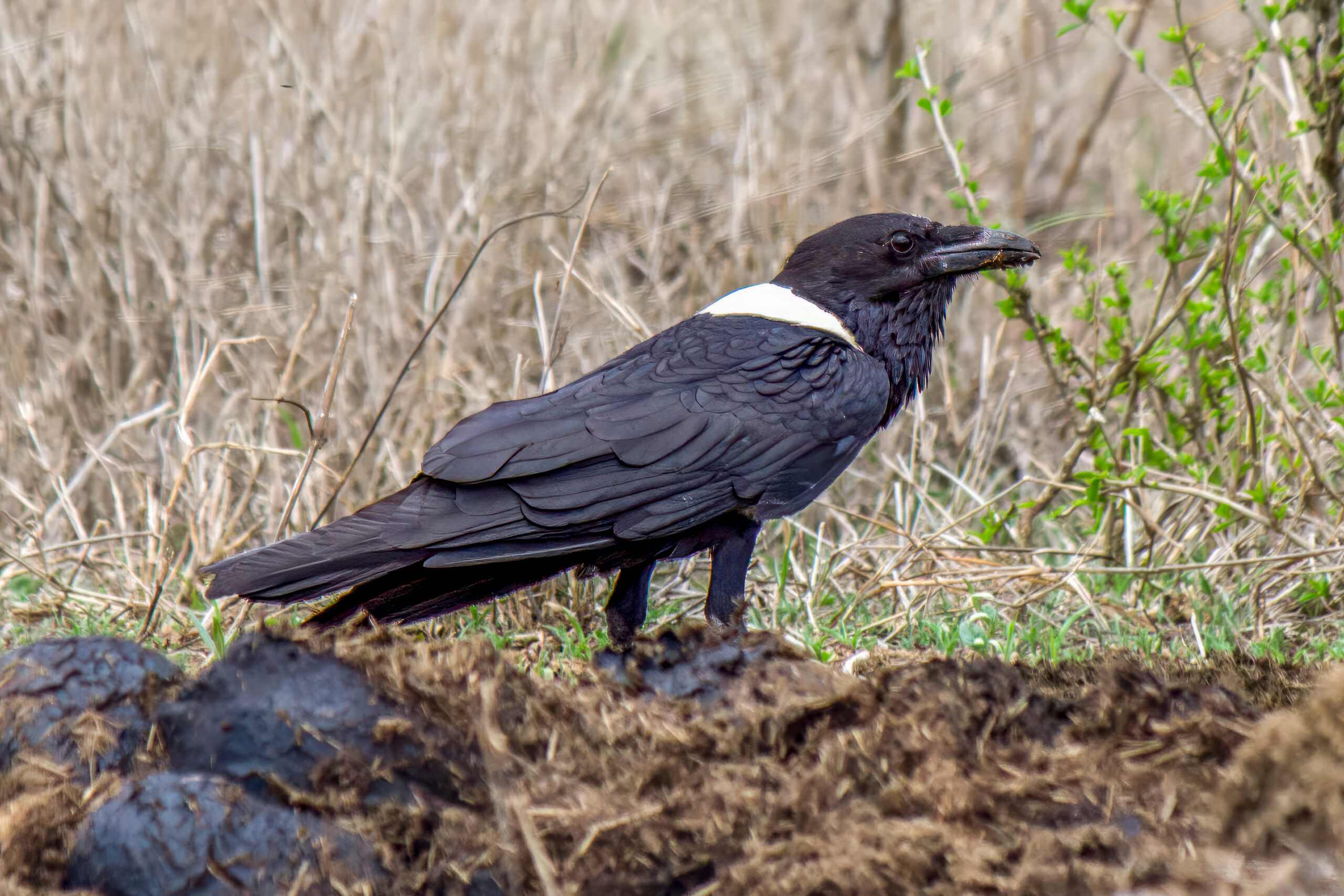Description
The house crow (Corvus splendens) is a smallish crow originally native to the Indian subcontinent and Indochina, with introduced populations in many other parts of the world. Typically measuring between 40 to 43 cm (16-17 in) in length, this crow is easily recognizable by its glossy black plumage, contrasted with a greyish neck and breast. It has a slender appearance and long legs. Compared to other crow species, such as the larger and more robust large-billed crow (Corvus macrorhynchos), the house crow has a slimmer build and a more slender bill.
Diet & habitat
House crows are highly adaptable and thrive in urban environments, villages, and coastal areas. They are omnivorous and opportunistic feeders, primarily consuming a wide range of food items such as grains, fruits, insects, small reptiles, and garbage. They are known to scavenge and will feed on human refuse, making them particularly common in densely populated areas. The crow’s diet also includes eggs and nestlings of other bird species, which has earned it a reputation as a formidable predator in regions where it has been introduced.
Behavior
The house crow is a highly social bird, often found in large, noisy flocks. It is known for its intelligence, problem-solving abilities, and complex social behaviors. These birds are particularly vocal, using a variety of calls to communicate with each other. They exhibit strong territorial behavior, especially during the breeding season, and will aggressively defend their nests from intruders. Additionally, house crows have been observed using tools to obtain food, demonstrating their advanced cognitive abilities.
Nesting
Breeding season for the house crow typically occurs during the spring and early summer months, although this can vary depending on the region. They are monogamous, with pairs often staying together throughout the year. Nests are usually built in tall trees, often in close proximity to human habitation, and are constructed from twigs, wires, and other available materials. The female lays between 3 to 5 eggs, which are incubated for about 17 to 19 days. Both parents share responsibilities in feeding and protecting the young. Fledglings leave the nest around 3 to 4 weeks after hatching, though they remain dependent on their parents for several weeks thereafter. House crows have a life expectancy of about 6 to 10 years in the wild, although they can live longer in captivity.
Introduced populations
The house crow has been introduced to several regions outside its native range, often unintentionally through ship cargo. Notable invasive populations exist in parts of Africa, the Middle East, Southeast Asia, and the Indian Ocean islands. These introductions have had significant ecological impacts, as house crows compete with native bird species for resources and are known to prey on local fauna. In some areas, their aggressive nature and rapid population growth have led to efforts to control or eradicate them to protect local ecosystems.
Status
The house crow is listed as a species of least concern by the IUCN, owing to its wide distribution and large population. However, its invasive status in many regions has led to it being considered a pest, with efforts to manage its populations in some areas. Despite this, the house crow remains a successful and widespread species, with no immediate threat to its global population.







